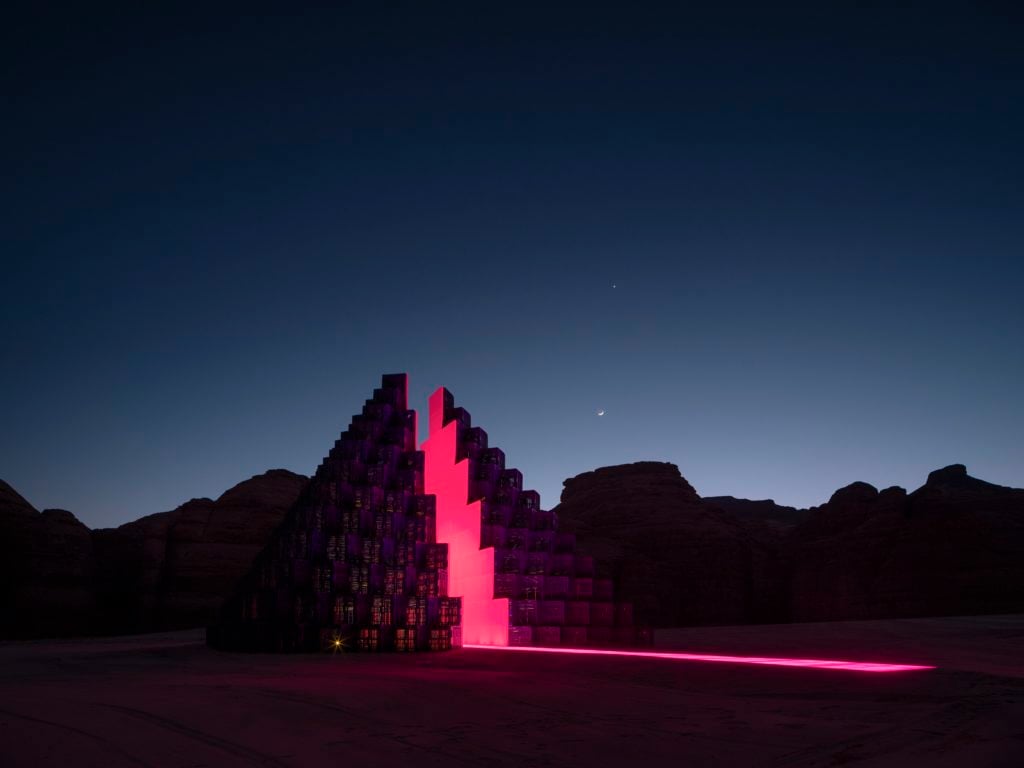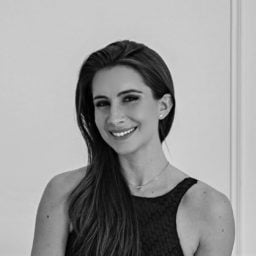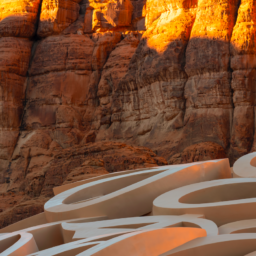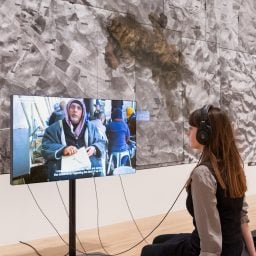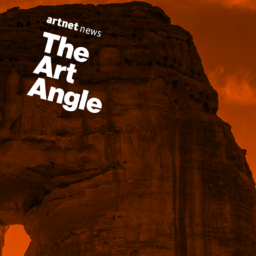The opening of the Desert X exhibition in AlUla this week could be a rare opportunity for Saudi artists to show their work to a global audience of industry tastemakers. But the murder of journalist Jamal Kashoggi at the purported direction of crown prince Mohammad bin Salman in 2018 led several prominent board members to withdraw from the government-backed event. Now, the participants who remain are left wondering whether the world will be able to see through the shadow of the crime to the art.
Saudi Arabia has long had an image problem. This formerly closed-off country is still largely associated with the suppression of women’s rights, the maltreatment of migrant workers, public beheadings, and the confinement of social activists. But events like the inaugural Desert X AlUla, due to take place from January 31 to March 7, are part of the country’s campaign to modernize and change its public image.
Desert X AlUla takes place under the auspices of the Saudi Royal Commission of AlUla, which is part of the crown prince’s economic, cultural, and social reform plan known as Vision 2030, which aims to open the country up to tourism.
Organized by Desert X artistic director Neville Wakefield and Saudi curators Raneem Farsi and Aya Alireza, the show takes its cues from the Land Art movement of the late 1960s and early ’70s, and features large-scale works installed amid the gigantic rock formations, tombs, and ancient city that defines AlUla.
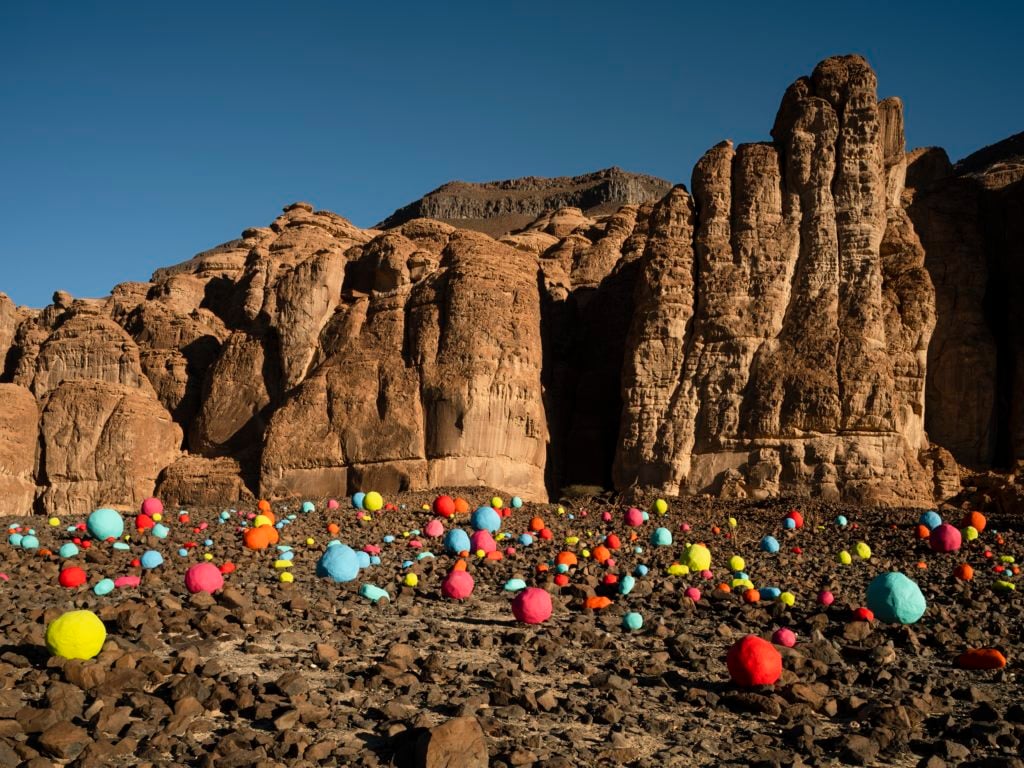
Mohammad Ahmed Ibrahim, Falling Stones Garden (2020). Installation view at DesertX AlUla. Photo by Lance Gerber, courtesy of the artist, Lawrie Shabibi, RCU, Desert X.
Condemnations and Withdrawals
In October, Los Angeles Times art critic Christopher Knight called Desert X AlUla “morally corrupt” when it was announced almost exactly a year after the murder of Khashoggi. Three of the show’s board members resigned in protest: fashion designer Tristan Milanovich, curator Yael Lipschutz, and artist Ed Ruscha, who, in an interview with the Desert Sun compared the Saudi edition to “inviting Hitler to a tea party.”
Since then no other board members have resigned. “The Desert X board overwhelmingly supported the decision to move forward with this exhibition,” Wakefield told Artnet News. “The current board supports this program and believes that art has the power to make change and foster dialogue and exchange.”
“I wish Ed [Ruscha] could have come to AlUla, attended the show, gotten to know us and seen our work,” Muhannad Shono, one of the participating artists, told Artnet News. “Many Saudi artists are fed up with having to deal and respond to the bad headlines. None of the western media outlets have asked me about my work. All people want to do is talk about the controversy and not the art.”
The perception, Shono continues, is that “what I am doing and what other Saudi artists are doing is part of some propaganda agenda. I am working on concepts and ideas that are in no way scrutinized or censored. I am not part of some propaganda machine. I am an individual artist that is excited to be part of all the changes happening here. We want people to come and reach out to us and see what the people are doing.”
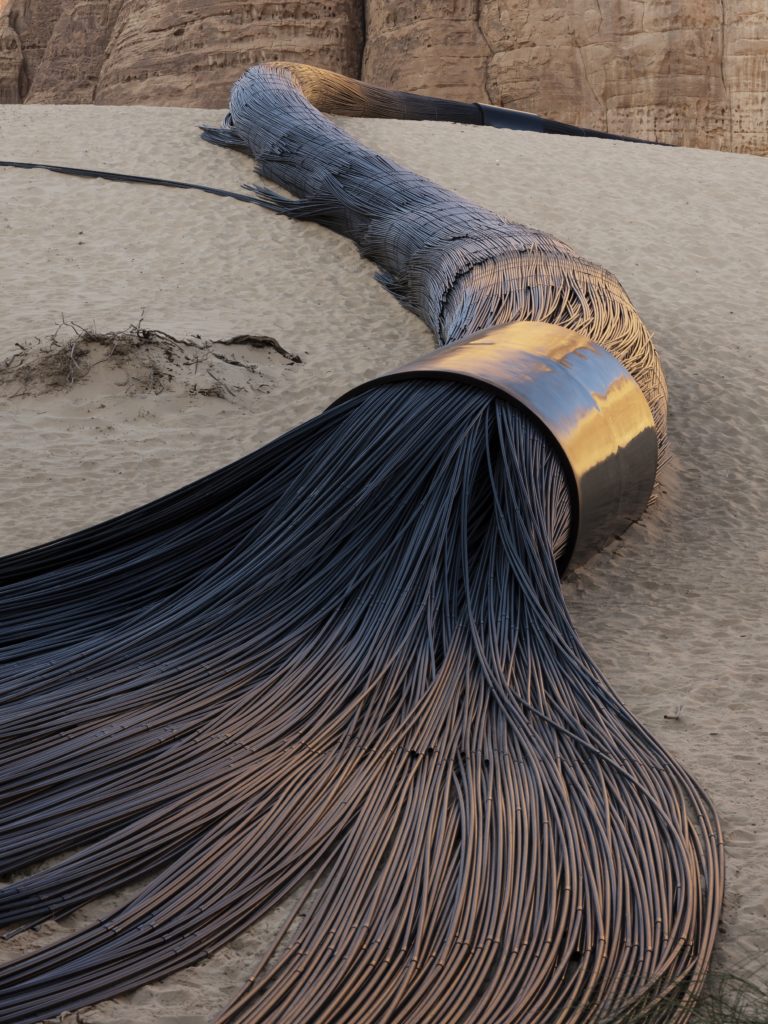
Muhannad Shono, The Lost Path installation view at Desert X AlUla. Photo by Lance Gerber, courtesy of the artist, RCU, and Desert X.
Shono will show a 984-foot-long sculpture made out of 65,000 pipes called The Lost Path (2020). “I want to inspire a sense of adventure whereby the viewer discovers that finding their own path and learning something about themselves in the process is the ultimate treasure,” he explains. His use of pipes also serves as a reflection on the oil they once stored, and how that oil, according to Shono, “impacts change, policy, and decisions of nations.” The material, he continues, “is like a stroke of ink that allows me to make a sculptural sketch in the desert.”
Another hurdle has reportedly been the timing.
“Desert x is a great initiative because it brought regional and international artists together,” says French-Tunisian street artist eL Seed. “However, it was very challenging to install my work in just three weeks time. I challenged myself and tried to match my ambitions with the beauty of the place.”
Plans were revealed to the media on October 7, 2019 in a press release. By that date organizers said most artists had visited the site and were in the midst of preparation of their works.
The hardship of mounting an outdoor exhibition of large-scale works has nothing to do with the show’s location, says Wakefield. “Regardless of where they take place, by their very nature, site-specific shows come with challenges and unknowns that artists chose to accept or not.
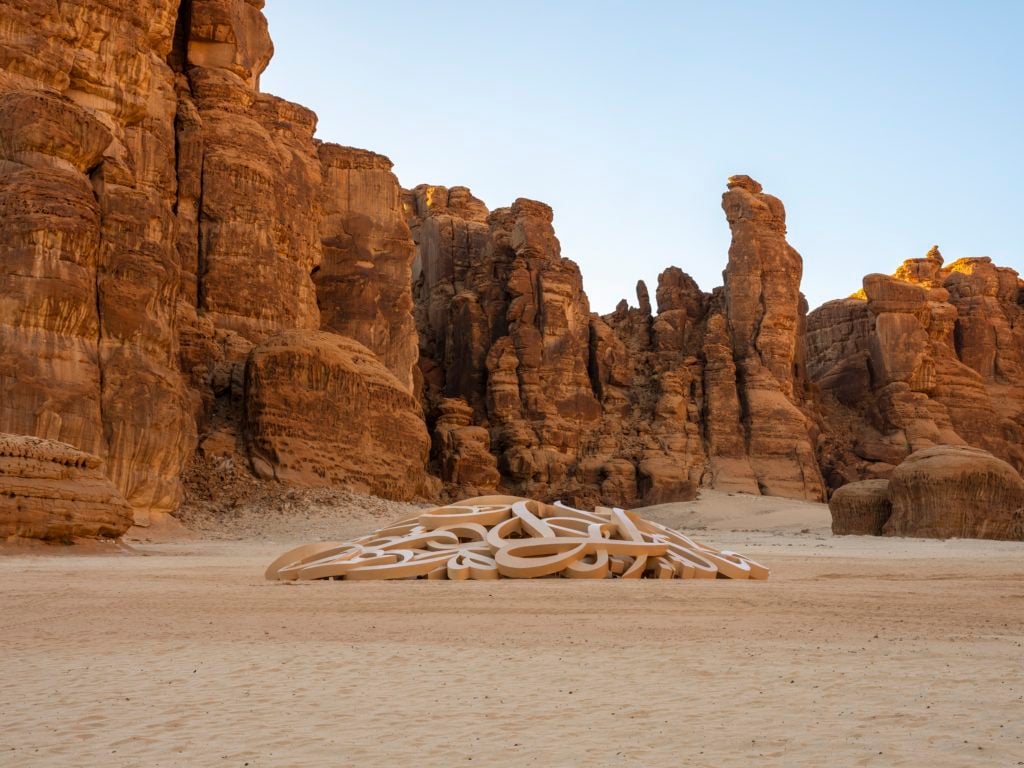
eL Seed, Mirage installation view at Desert X AlUla. Photo by Lance Gerber, courtesy of the artist, RCU and Desert X.
Part of the Problem or the Solution?
Some participants say that skipping the event would be a missed opportunity to foster positive change in the region.
“The exhibition was always intended to be a cross-cultural dialogue between artists from Saudi Arabia and its surrounding region, artists from previous iterations of Desert X in California, and from around the world,” Wakefield said. The artists who previously participated in Desert X are Lita Albuquerque, Sherin Guirguis, and Superflex.
“This has been confirmed by engagement with local communities, which has included the participation of a group of women weavers in Sherin Guirguis’s project, as well as workshops organized by Sherin, Manal AlDowayan, and Zahra AlGhamdi that have brought local women artists to site to preview the work and experience the process of installation,” added Wakefield.
“The message from the local curators, artists, and long-term collaborators was ubiquitous: change is necessary and coming,” said Cristina Casals Soler of the Danish artist group Superflex, which believes in visiting “unfounded territories, embracing different cultures, exchanging different values and working in difficult contexts,” Soler said. “The more difficult the context, the more important it is to engage and to be present and empower those who are determined to challenge the usual structures of power.”
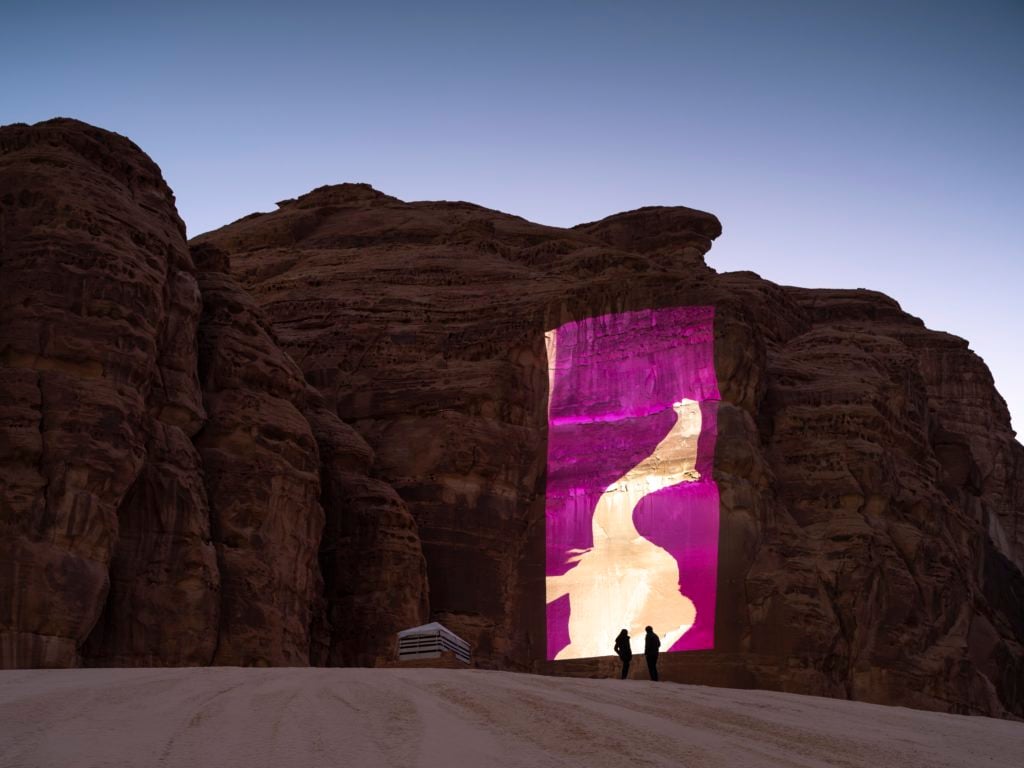
Wael Shawky, Dictums: Manqia II installation view at Desert X AlUla. Photo by Lance Gerber, courtesy of the artist, RCU, and Desert X.
In a country like Saudi Arabia, where 58.5 percent of the population is under the age of 30, according to the Saudi General Authority of Statistics, Desert X offers the opportunity to influence and support the next generation in establishing its own Saudi identity.
“This is the first opportunity of its kind in the kingdom,” co-curator Raneem Farsi told Artnet News. “It wasn’t part of our upbringing here to be exposed to all this art and culture. Now, with the opening, it’s such a great opportunity. [The exhibition] is so rich in its content. We want to elevate the art appreciation.”
Los Angeles-based Egyptian-born artist Sherin Guirguis says she “went back and forth” about whether to participate. “My work is political and very much about freedom of speech and telling the stories—the voices—of people who have been suppressed and oppressed, whose work has disappeared,” said Guirguis. “I’m interested in engaging with other artists and the people of AlUla, of Saudi Arabia, and exploring what it means to make art under these kinds of conditions.”
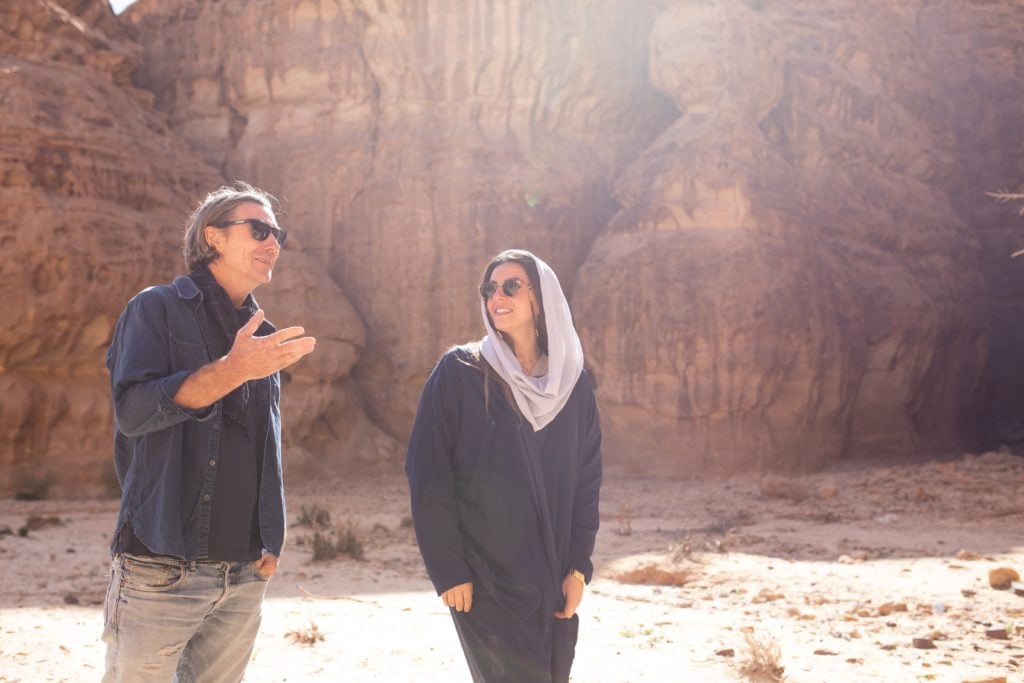
Neville Wakefield and Raneem Farsi, co-curators of DesertX AlUla onsite. Photo: Noon Art © RCU.
Her installation, Kholkhal Aliaa, will look at the role of cultural memory in shaping ideas of the present. It is wedged in a rock crevice, and takes the form of a Bedouin anklet—a symbol of female power and agency as well as a metaphor for travel, a reference to the ancient days of AlUla and how the area served as a place for trade.
The 2,000-year-old city of AlUla, situated nearby the desert rock tombs made by the Nabateans, the pre-Islamic Arab people who also built Petra in Jordan, has long been considered haunted, occupied by Jinn or evil spirits. Today, the notion that the Prophet Mohammad urged people not to enter is contested and AlUla is open to all—Saudis and tourists alike.
Desert X, staged for the first time in this storied ancient region, is also, in many ways, making its first appearance after decades of silence on the world stage, and it’s debuting with a clear message. “The reason everyone wants to do this, the artists and myself, is to open up dialogue,” Wakefield said. “The common voice among all the artists I’ve been working with has been, ‘If you don’t give people the opportunity to change their hearts and minds and become engaged with outside cultures, then you’re part of the problem, not part of the solution.’”
